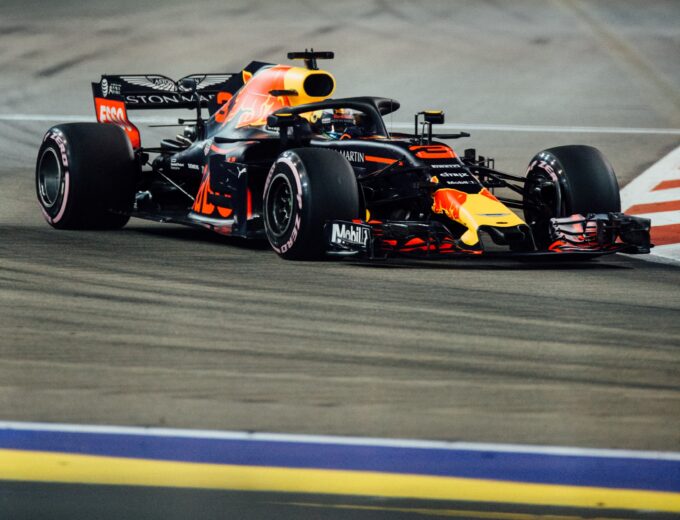The sports industry must accelerate its journey towards a sustainable future
Forget this week’s dreary UK weather. On the whole, this year in the UK it has been…Hot. Remember the balmy New Year? Our 40°C July? On the surface, British sport reaped the rewards. A summer without Wimbledon rain delays and undisturbed cricket seemed, well, glorious.
But elsewhere, glorious it was not. During cricket’s Indian Premier League (IPL), it wasn’t just Jos Buttler on fire. As dehydrated birds quite literally fell from the sky, matches were moved north, ice breaks replaced water breaks and doctors were constantly examining players’ hydration levels. It’s a brutal reminder when even the least strenuous of professional sports can become life-threatening. Compound that with similar developments over the last few years; golf tournaments delayed due to drought; tennis players retiring because of heatstroke; out-of-season typhoons cancelling rugby matches, and bushfires preventing casual exercise. In February this year, there was a Winter Olympics without snow. This month, there’s a World Cup in the desert.
The sports industry is often overlooked as a major stakeholder – and contributor – to the climate crisis, but it is set to suffer as much as any. The FleishmanHillard Sports Team examines and questions how the industry is repurposing itself to kickstart the journey towards a sustainable future.
Time to Prioritise Purpose Over Profit
 The sports industry is no innocent bystander when it comes to climate change contribution. More international races and competitions mean more travel, more merchandise demand and more stadiums. All at a time when clubs, leagues and organisations should be looking to reduce their impact. According to CMI, 0.7% of F1’s carbon footprint comes from car emissions; 45% of that is created by logistics, 27% by business travel and 19% by production processes. And yet, Formula 1 added even more international events to its calendar despite making energy-efficient changes to the cars. Despite reinforcing its commitment to environmental sustainability, a football club opted to take a 10-minute flight to Leicester instead of a two-hour, 100-mile coach journey. Ironically, its partnership with the Renewable Energy Group includes raising awareness of biofuel products.
The sports industry is no innocent bystander when it comes to climate change contribution. More international races and competitions mean more travel, more merchandise demand and more stadiums. All at a time when clubs, leagues and organisations should be looking to reduce their impact. According to CMI, 0.7% of F1’s carbon footprint comes from car emissions; 45% of that is created by logistics, 27% by business travel and 19% by production processes. And yet, Formula 1 added even more international events to its calendar despite making energy-efficient changes to the cars. Despite reinforcing its commitment to environmental sustainability, a football club opted to take a 10-minute flight to Leicester instead of a two-hour, 100-mile coach journey. Ironically, its partnership with the Renewable Energy Group includes raising awareness of biofuel products.
Something isn’t right. But some of sport’s stakeholders are starting to make real changes. In SailGP’s Impact League, two victors emerge: one for speed, the other for sustainability. The latter wins funding for their chosen purpose partner showing that even in sport, small wins in sustainable boat materials and responsible competition travel can lead to wins on the podium. Extreme E is another example of high-impact sport that delivers fans and athletes a thrilling experience, without environmental impact.
 But incorporating sustainability-first infrastructure into a new sport is easier than changing an existing sport’s infrastructure. Despite the significant investment required, it isn’t impossible either. Some have shown that the journey towards carbon neutrality isn’t only doable, it’s commercially savvy. According to CEO Henry Staelens, the League 1 English football club has seen its commercial income skyrocket in recent seasons. Partnership revenue has quintupled over the last three years, even though the Rovers prioritise purpose over profit.
But incorporating sustainability-first infrastructure into a new sport is easier than changing an existing sport’s infrastructure. Despite the significant investment required, it isn’t impossible either. Some have shown that the journey towards carbon neutrality isn’t only doable, it’s commercially savvy. According to CEO Henry Staelens, the League 1 English football club has seen its commercial income skyrocket in recent seasons. Partnership revenue has quintupled over the last three years, even though the Rovers prioritise purpose over profit.
Ultimately, when you look where the sports industry has been and where it is now, progress is being made. Many sports organisations consider operational efficiencies within their properties, assess travel footprints to and from matches, and connect with stakeholders to reduce emissions in supply chains. Many stakeholders, including the English Cricket Board (ECB) and Wembley, are members of third-party consulting organisations like the Green Alliance – a sustainability-focused global trade organization that convenes stakeholders from around the sporting world.
Nevertheless, for the industry as a whole, there’s still work to do to pick up momentum on the journey towards progress.
How Does the Sports Industry Accelerate the Momentum?
 The jury’s out. Sport has the capability and responsibility to influence and educate its global fanbase. Inroads have been made, but giant institutions still resist making industry-standard moves like joining the UN’s Race to Zero. Every stakeholder within sport – including fans – must realise that it is essential for sport to carve a role in keeping the Earth’s surface temperature rise below 1.5°C. For the greater good of our planet, but also to futureproof their own clubs and organisations. And as we’ve heard over the last few days at COP27, now is the time to deliver. To do so, the sports industry must focus on – and indeed actively nurture and facilitate – two key factors.
The jury’s out. Sport has the capability and responsibility to influence and educate its global fanbase. Inroads have been made, but giant institutions still resist making industry-standard moves like joining the UN’s Race to Zero. Every stakeholder within sport – including fans – must realise that it is essential for sport to carve a role in keeping the Earth’s surface temperature rise below 1.5°C. For the greater good of our planet, but also to futureproof their own clubs and organisations. And as we’ve heard over the last few days at COP27, now is the time to deliver. To do so, the sports industry must focus on – and indeed actively nurture and facilitate – two key factors.
First, it must embrace the cult of personality. One only needs to glance at the environmental movement to see the power that individual charisma, passion and drive can have on changing behaviours and narratives across the world. Personalities like Sir David Attenborough and Greta Thunberg have had an almost incalculable impact. With the help of sport’s immense platform, so can the likes of Serena Williams, David Pocock and Tatyana McFadden. Already, they are venerated by people of all generations and nationalities. However, it is up to the associated sports media, brands and governing bodies to grant them access to an even loftier platform, thrust the megaphone into their hands to create the resources to affect real change. It will not just inspire fans towards that goal, but it will put pressure on the global institutions and decision-makers that have the ability to make enormous progress with unilateral decisions.
Secondly, the institutions themselves must rise to this crucial moment. Raising awareness with the help of sports stars is important, but as the Expert Group’s ‘Integrity Matters’ report from COP27 shows, organisational accountability is the true imperative. Ultimately, sweeping institutional changes – changes of which only governing bodies, league administrators, brand sponsors and teams are truly capable – are the planet’s true antidote.
So we must work together. And that’s where the public relations industry comes in. We can galvanise accountability. To do so, we must shine a light on the organisations enacting change and shine a light on those who aren’t. We must counsel agency clients to be tenacious in the face of environmental resistance, activism and criticism. As we do in our best campaigns, we must bring companies, institutions and people together to create movements and unions greater than the sum of their parts.
Whether it’s a global climate conference or a lower league football match, communication is integral to our planet’s future. Sports communications, and sport itself, are essential and powerful vessels that can help catalyse the planet’s complex journey towards environmental recovery. The bell for the final lap has rung; now we must all, together, accelerate towards the finish line.
FleishmanHillard Sports Team
Find Out More
-
Platinum CMS Award
March 13, 2024
-
Changing Communications Tack at Mobile World Congress
February 21, 2024


